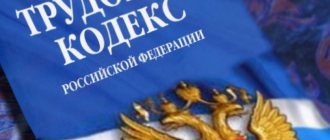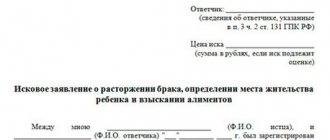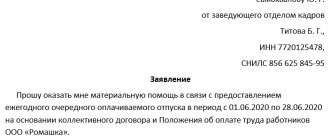Reasons for extending the privatization period
One of the reasons for the permanent extension of deadlines was the inertia of the population. When privatization began in Russia, the government believed that citizens would very quickly register the required meters as their property. In fact, even today, 27 years later, only about 80% of housing has been completed. On a national scale, the remaining 20% constitutes a significant figure for the budget.
Why are people not in a hurry to conclude such a lucrative deal? Family relationships, life situation, and the social status of the responsible tenant play a role here. You must complete the paperwork in person. Not all citizens are ready and want to do this.
In 2014, with the annexation of Crimea and Sevastopol, the government extended the deadlines so that residents of these territories could take advantage of their legal rights. Citizens of Russia have equal rights, and the right to housing remains one of the basic ones.
The latest changes were made in February 2021. Legislators have canceled the deadlines for free privatization completely.
[edit] Loan auctions
The next stage of Russian privatization was associated with the so-called. “loans-for-shares auctions”, as a result of which significant volumes of Russian industrial enterprises and mining enterprises were concentrated in the hands of a narrow group of individuals later called “oligarchs”. In general, the privatization processes compromised the very idea in the eyes of the majority of Russian citizens, since the redistribution of property looked from their point of view inadequate and lacking a clear motivation.
Loans-for-shares auctions were held according to the official version in order to replenish the state budget. In practice, the need for urgent budget replenishment (that is, its acute deficit) was organized by issuing government loans unsecured by assets to future oligarchic groups. The funds received were used by the oligarchs to participate in auctions, and the loans were never returned to the state in full.
As a result of these auctions, state property was transferred into the hands of oligarchs at an unprecedentedly low price.
Loans-for-shares auctions were undertaken in 1995 with the aim of replenishing the state treasury. The government planned to raise money by privatizing some state-owned enterprises. The idea of auctions to replenish the budget was put forward by Vladimir Potanin, who headed ONEXIM Bank. The initiative was supported by Anatoly Chubais, who was Deputy Prime Minister at that time. The auction was supervised by the head of the State Property Committee Alfred Koch.
The most profitable companies were put up for sale. Auctions were called collateral auctions, since, unlike regular auctions, companies were not sold, but were given as collateral. However, they were not bought back. According to most experts, extremely low prices were set. Competition at auctions was very low. This happened because many potential buyers were not allowed to visit them. In many cases, the competition involved several firms owned by the same person or group of people. Moreover, state-owned enterprises were often purchased not with their own money, but with money borrowed from the state.
As a result of loans-for-shares auctions, billionaire oligarchs emerged (Berezovsky, Khodorkovsky, Abramovich and others).
Benefits of housing privatization
Private property allows a person to feel free.
Having an apartment at your disposal is beneficial for the following reasons:
- Privatized housing constitutes significant capital for a Russian. If only people related to the tenant could live in a state apartment, then any person can be registered in your own housing. This opportunity acquires particular significance in the era of the spread of civil marriages.
- Private property can be sold, donated, or left as an inheritance.
- Free disposal of housing gives citizens greater mobility in finding work or changing their place of residence.
- Investing in real estate is a profitable investment.
- People are more willing to invest in renovating their own homes - this improves the family’s quality of life. It makes no sense for a tenant to invest money in a state fund.
The law allows private property to be rented out. In large cities of Russia, this has become a good source of additional income for citizens.
Reasons and sources of privatization in Russia
The centralized model of the economy assumes the concentration of all economic processes in state hands. This model existed in different countries. It was especially common in the states of the “socialist camp”. Over time, it became clear that this model belongs to outdated administrative-command systems. The market one, on the contrary, seems to be more flexible and capable of self-regulation. The pillars of a market economy are private property and free enterprise.
The reasons for privatization in Russia were:
- high government spending;
- inefficient economy and corruption;
- obvious ripe need for the institution of a market economy;
- elimination of food and commodity shortages;
- weak budget, need to strengthen the national currency;
- the need for the development of small and medium-sized businesses.
The privatization process took place through the execution of a purchase and sale transaction equal to financial calculations. The resource could be the net funds of the enterprise, as well as shares of profits, funds, profits of individuals and the enterprise itself. The second source is borrowed funds, as well as money from the sale of securities. The third source is the personal funds of employees and individuals.
Usually, when conducting transactions, a symbiosis of available resources was used. But a particularly profitable option was to use the company’s own funds. And loans and credits were taken out last.
Negative aspects of housing privatization in Russia
The article will be one-sided if we do not consider the negative aspects of privatization in Russia for new owners. By giving away the housing stock, the state transfers not only material assets, but also the accompanying responsibility for its maintenance.
Risks and burdens that accrue to residents with new property:
- The need to pay fiscal fees. If until recently the amount of housing tax was not significant for a family, then with the introduction of a progressive scale it has increased noticeably. Taxation based on market value had the greatest impact on low-income residents of large cities.
- Increase in housing and communal services fees. Re-registration of documents, all other things being equal, entails the need to maintain public utilities and maintenance of the building at one’s own expense.
- The contents of the new property, with intra-apartment communications worn out back in the Soviet period, by default pass from the state to the happy owners.
- The dilapidated and emergency housing stock, which has undergone privatization, is being resettled according to new standards that are unfavorable for residents. When moving into municipal housing, everyone registered receives square meters in accordance with sanitary standards. Today it is 18 square meters. m per resident. Owners of a privatized apartment can count on a similar area, regardless of the number and gender of those registered.
- The owners are responsible to their neighbors for any force majeure in their home. While the apartment is state-owned, a broken pipe is the responsibility of the municipal authorities. As soon as the documents for privatization of the apartment are completed, the owners are obliged to pay the neighbors for the damaged repairs.
This is important to know: When a mortgaged apartment becomes a property
The state has provided the opportunity to return privatized housing back. This can be done if, after completing the documents, the owner has not changed and additional residents have not been registered in the apartment. However, citizens rarely use this right.
Privatization of enterprises[edit | edit code]
1992 - June 1994: mass privatization (small and voucher)[edit | edit code]
In June 1992, the Supreme Council of the Russian Federation approved the State Privatization Program for 1992, which determined possible methods of privatization for enterprises depending on their size[9].
According to the program,
- small enterprises had to be sold at auction or could be directly sold to private individuals working at these enterprises (“small” privatization).
- large enterprises, as well as some of the medium ones, had to be transformed into open joint-stock companies, and then go through the sale of shares. At the same time, at least 29% of the authorized capital had to be sold through public auctions for privatization checks, commonly called vouchers (“check” or “voucher” privatization).
In a number of particularly significant industries (subsoil, forests, shelf, pipelines, public roads, television stations, etc.) privatization was prohibited. At the same time, enterprises of wholesale and retail trade, public catering, construction, production and processing of agricultural products, food and light industry were subject to mandatory privatization.
Small privatization[edit | edit code]
The privatization of small enterprises (trade, consumer services, etc.) was launched by the government from the beginning of 1992, without waiting for the Supreme Council to approve the State Privatization Program for 1992 (which occurred only in June).
In April 1992, the first auction in Russia for the sale of trade, consumer services and public catering enterprises, to which Gaidar and Chubais came, was held in Nizhny Novgorod[10].
By November 1, 1994, 60-70% of trade, catering and consumer services enterprises were privatized.[11]
Voucher privatization[edit | edit code]
A mandatory stage of privatization when selling for shares was the sale of part of the authorized capital, at least 29%, for vouchers at public auctions. To do this, it was necessary to provide the population with a sufficient number of vouchers by the time the auctions began.
On October 1, 1992, privatization checks (vouchers) began to be issued to the population. Checks were distributed through branches of Sberbank of the Russian Federation; upon receipt, you had to pay 25 rubles; the nominal value of the voucher was 10 thousand rubles, which corresponded to the cost of fixed assets of enterprises per capita in January 1992 prices[12]. The vouchers were anonymized and could be freely bought and sold, both directly between citizens and through specially created check investment funds. The actual cost of vouchers was determined by the balance of supply and demand and varied from 500 to 29 thousand rubles (from 5 to 24 US dollars at the exchange rate)[13].
The first 18 auctions were held in December 1992. In total, up to February 1994, 9,342 auctions were held, in which 52 million vouchers were used.[13]
The fair market value of the shareholding that could be obtained in exchange for a single voucher varied widely depending on the company whose shares were acquired in exchange for the voucher, as well as the region where it took place. For example, in the Nizhny Novgorod region one voucher could be exchanged in 1994 for 2000 shares of RAO Gazprom (their market value in 2008 was about 700 thousand rubles), in the Moscow region - for 700 shares of Gazprom (in 2008 - about 245 thousand rubles), and in Moscow - for 50 shares of Gazprom (17 thousand rubles in 2008). For one voucher you could also get 7 shares of the GUM Trading House (less than 100 rubles in 2008).
Sergei Mavrodi: “If it weren’t for my actions, then no one would have seen Gazprom like their ears. By the way, this is one of my little exploits that no one remembers. As for Gazprom shares, I’m already tired of talking about it. Gazprom is the most delicious piece, and it could not be purchased with checks to anyone except Gazprom employees and residents of these regions. That is, if you are not a Chukchi, then you will not see Gazprom. Therefore, since there were a lot of participants from these regions, I had to register everything in the name of private individuals.”
[14][15]
Critics of check privatization considered it dishonest and unfair, since, in their opinion, it led to the undeservedly rapid enrichment of a narrow group of people. For example, there was an opinion that the adopted privatization procedure gave serious advantages to the so-called “red directors” (heads of enterprises who received these positions in Soviet times). Using administrative pressure, directors could achieve the desired voting results at shareholder meetings, as well as buy back shares from enterprise employees at reduced prices.
1995: Loans-for-shares auctions[edit | edit code]
Loans-for-shares auctions were undertaken in 1995 with the aim of replenishing the state treasury through loans secured by state blocks of shares in several large companies (Norilsk Nickel, Sibneft). The government did not repay the loans, so the shares became the property of the creditors[16][17].
As a result of loans-for-shares auctions, [ how?
] billionaire oligarchs (Berezovsky, Khodorkovsky, Abramovich and others).
Loans-for-shares auctions have been criticized due to the fact that:
- the alienation of federal property was carried out at significantly reduced prices, and the competition was actually of a sham nature;
- the results of the loans-for-shares auctions were illegitimate in the eyes of a significant part of society and undermined confidence in privatization as a whole.
1996 - present[edit | edit code]
In 1997-2004, partial privatization took place, in the form of the sale of 7-85% stakes in a number of large oil companies, ONAKO, Slavneft, Lukoil)[18][19][20][21][22][ 23] and Svyazinvest.
In 2002, the oil industry companies of the Republic of Bashkortostan Bashneft, Bashkirnefteprodukt, Ufa Oil Refinery, Ufaorgsintez and Novoil were privatized by seven unknown LLCs and then transferred to Bashkir Capital, the main beneficiary of which was considered Ural Rakhimov. The Accounts Chamber in 2003 regarded this fact as “an unprecedented case of theft of assets from state property”[24].
In 1997–2001, completing the reform of the coal industry, state stakes in a number of coal mines were privatized, during which 56% of the total production of the Russian coal industry (in 2000 figures) passed into private hands.[25]
In 2001, the privatization of Rosgosstrakh began - by 2010, 49% of the shares were sold at 3 auctions[26].
In 2006-2007, the partial privatization of three large state-owned Sberbank and VTB Bank took place in the format of the so-called “people's IPO”.[27][28]
In 2007, as part of the completion of the reform of RAO UES, almost half of the power plants and 22 sales companies in Russia passed into private hands (with some restrictions in the form of a state monopoly on price regulation). Proceeds from privatization through additional share issues amounted to about $25 billion.[29]
In 2011-2012, a 10% stake in VTB Bank[30] and a 7.6% stake in Sberbank[31] were sold
In 2011, 75% of Freight One's shares were sold at auction[32][33]. The auction became the largest privatization deal within the framework of the Russian Railways reform.[34]
In December 2021, negotiations were completed on the sale of a 19.5% stake in Rosneft for 10.5 billion euros.[35]
Results[edit | edit code]
According to FAS estimates, the share of the public sector in the Russian economy in 2005 was 35%; by 2015 it had risen to 70%.[36]
According to the privatization program for 2017-19, approved by the Russian government in February 2021, state-owned shares in 298 federal state unitary enterprises and 477 joint-stock companies are subject to privatization (full or partial). In general, revenues from privatization are expected to reach 5.6 billion rubles annually.
The privatization plan, in particular, provides for a reduction in the state stake in ALROSA (up to 29% + 1 share), VTB and Sovcomflot (up to 25% + 1 share), as well as a complete exit from NCSP, OZK and Kristall PA.[37]
In what year did the privatization of apartments begin?
Large enterprises aside, Russians are most interested in the privatization of the housing stock. During the Soviet era, most citizens had the opportunity to “get” an apartment after several years of work at enterprises. Sometimes this required traveling to the most uncomfortable conditions of the North. Apartments were allocated on the basis of social rent. The right of ownership remained with the state or municipality. With rare exceptions, this situation persisted until the 90s, when the privatization of apartments in Russia began.
When was the first privatization law adopted in Russia?
Privatization is a consequence of which state or municipal property passes into the hands of private owners.
The beginning of the last decade of the twentieth century was marked by a change in not only the political, but also the economic course. However, this does not mean that until this time it was impossible to acquire ownership of an apartment. There were construction cooperatives even then. In addition, back on 12/02/1988, the Council of Ministers of the USSR adopted the Resolution “On the sale to citizens of apartments in state and public housing stock as their own.” That is, it was already possible to buy the apartment, although it cannot be called privatization in its current understanding. Within a couple of years, similar acts were adopted at the republic level.
However, this action was not successful, because the apartment had to be purchased at full price. An honest Soviet citizen did not have that kind of money. And if there were, then their origin would have to be explained.
Attention! It is 07/04/1991 that can be considered the date of the beginning of housing privatization in Russia. Enterprises and production facilities began to pass into private hands en masse already in 1992.
Like most regulations of the era of nascent capitalism, the 1991 law was very crude and sketchy. It did not clearly define the privatization procedure itself. Certain categories of citizens were poorly protected. The holes were partially patched at the local level. Until now, the practical procedure for local privatization is regulated by regional regulations on the provision of services for the transfer of housing into the ownership of tenants.
The name of regional acts may vary somewhat, but its essence remains the same - it determines the practical procedure for registering privatization. Here the citizen will find the answer to questions about what documents need to be submitted and where.
The first stage of big privatization
In a year, Russia will celebrate the 30th anniversary of one of the most controversial events in the country's history.
– start of mass privatization through vouchers. Initially, the goal of this process was quite clear and logical: all countries that turned from the socialist path to the capitalist one went through privatization. This is a basic principle of a market economy - the state cannot be an effective owner.
Therefore, already in 1992, voucher privatization started in Russia
, and according to a completely new format at that time: every resident of the country becomes not just a co-owner of the national property (as was the case under the USSR), but receives a very real share in a very real enterprise.
To “crank out” such a large-scale operation, the government valued all existing enterprises at that time at 4 trillion Soviet (at that time) rubles, and 35% of this amount, or 1.4 trillion, was decided to be distributed to people. According to the numbers, everything coincided well - about 140 million people lived in the country, so exactly 10,000 rubles came out for each Russian. Then, however, it turned out that the value of 4 trillion was taken from the revaluation of the book value of the assets of Soviet enterprises for 1984, but over the past 8 years these assets have lost a fair amount of value.
Privatization check (they were popularly called vouchers)
- a government security, which, according to the original plan, was needed to pay for the privatization of state and municipal enterprises into the ownership of citizens. Checks were issued under certain conditions:
- each citizen was entitled to one check, regardless of his age, period of residence in Russia or income;
- for issuing it was necessary to pay a 25 ruble commission fee, although they were officially issued for free;
- the voucher could be exchanged for shares of enterprises through check auctions or invested in check funds;
- The check could only be used once. When used, holes were punched on the document (“redemption” of the voucher);
- a check is a bearer document, so they could be bought, sold, exchanged, bequeathed, etc.;
- The checks were marked with an end date of December 31, 1993, but then their circulation period was extended for another six months.
As a result, 144 million vouchers were issued in Russia, and about 97% of the population received them. Most often, owners invested their vouchers in shares of the enterprises where they worked, through closed subscription (50% of all checks were used this way) - this was allowed if the owner worked at the enterprise for 7/10 years (women and men). A quarter of the checks were sent to check investment funds, and another quarter were sold.
By the way, according to one version , 24 million vouchers were not used by their owners at all
.
What happened next is widely known. Due to the huge number of vouchers in circulation and the sharp impoverishment of the population, they began to rapidly lose value. The denomination that was indicated on the check did not play any role at all. In one region, a voucher gave 6,000 shares of Gazprom, and in another - only 65. Vouchers were often simply bought for next to nothing - their prices at one time dropped to the equivalent of $5
.
But this same program helped create the first Russian billionaires. At the origins of privatization were Mikhail Fridman, Oleg Deripaska, Vladimir Potanin and others - who were able to buy up shares with vouchers bought cheaply from Russians. Ordinary Russians bought shares in enterprises that soon went bankrupt, as did checking investment funds (only a few of which survived and became mutual funds).
The main result of the program is that in less than 2 years, thanks to voucher privatization, about 60% of the Russian economy passed into private hands
. Then there was “cash” privatization, but this is a subject for another discussion.
Changes in privatization legislation
Of course, the hastily adopted law needed improvement; it had a number of holes. Related both to the procedural procedure for registering a transaction and to the protection of certain categories and citizens.
Thus, only after 1993 amendments were adopted and clarifications were given by the Plenum of the Supreme Court of the Russian Federation, which took the side of protecting children. Until now, parents have massively excluded their children from participating in privatization. The consequences of the miscalculation continue to this day. The statute of limitations for such cases is easily restored.
Now children, who have become fully grown adults, turn to the courts to protect their violated rights. Apartments that were once privatized in violation of the law may change owners more than once. As a result, transactions that followed illegal privatization are declared invalid, and the last owner suffers large losses. After all, getting your money back for housing is almost impossible.
In order to protect orphans, a 5-year moratorium was established on the privatization of apartments allocated to them by the state. But this also did not happen immediately. As a result, most of the orphans remained on the street, falling into the clutches of scammers.
Another important change in recent years has affected communal apartments. The 1991 law does not mention them at all, but after the collapse of the USSR there were quite a lot of real estate of this type. The question arose about whether it was possible in principle to privatize an apartment with common areas. The answer to this question was given by the Plenum of the RF Armed Forces after 2000. Indeed, it is possible to privatize such housing. Even the consent of the residents of individual rooms will not be required. At the same time, common areas will remain common and will not become property.
In addition to these, there were a number of less noticeable changes and clarifications. Currently, about 80% of the municipal or state housing stock has been privatized, and the improvement of legislation in this area will most likely continue.
Was there anything good about voucher privatization?
At the start of voucher privatization, campaign ideologist Anatoly Chubais said that each voucher would cost the same as two Volgas.
Some time after the start of privatization, Volga increased in price to 3-4 million rubles, and checks, on the contrary, sharply depreciated. The authors of the reform wanted privatization to take place under relatively market conditions - and this is what happened, but only with the vouchers themselves.
Of the nearly 150 million Russians who received vouchers, approximately 40 million shareholders remain
– those who have really invested in some enterprise. More often than not, such investments were not the best choice, and the owners did not see dividends. Of the 646 check investment funds, only 136 survived and were able to pay dividends to their shareholders.
Of course, if someone exchanged their voucher for shares of Rosneft or Gazprom in the early 90s and did not sell them in all these years, now the equivalent number of shares could cost about a million rubles
. But most simply exchanged their vouchers for money or consumer goods.
The purpose of privatization was not to earn money for the budget - the state simply needed to transfer enterprises into private hands
, because the state itself at one point turned out to be unable to manage them. Moreover, it should not be given into the hands of the oligarchs, but distributed among the people. In fact, however, it was voucher privatization that created the first Russian oligarchs.
The overwhelming majority of opinions regarding voucher privatization in Russia are negative
. This operation is called nothing less than a scam, the arguments are usually as follows:
- the massive buying of vouchers for next to nothing created a class of super-rich people;
- Russians had no idea what could be done with the voucher and often sold them or exchanged them for something;
- ordinary citizens could, under various pretexts, be prevented from attending the check auction (which was prepared “for our own people”);
- the value of the voucher of 10 thousand rubles did not mean anything at all - the document had more of a psychological meaning than an economic one, etc.
Russian privatization of the 90s is indeed considered an example of how state property cannot be privatized
- instead of a mass class of owners, a very small number of super-rich people appeared in the country, and the privatization budget earned pennies (compared to the real value of the privatized objects).
Nevertheless, voices are heard in support of the decisions taken then
. Thus, the decision to begin mass privatization is considered correct - in those conditions it was even safer than leaving enterprises in state ownership, and thus the process of structural restructuring of the economy was launched. True, the question of exactly how best to carry out privatization remains open.
As Kommersant wrote back then, reforms were needed quickly
, and there was simply no time to conduct a painstaking assessment of enterprises and sell them individually. There were simply no specialists in the country who could competently organize auctions and evaluate assets. On the other hand, potential buyers did not have the money to buy businesses at a fair price.
And the model that was ultimately adopted met all the requirements - people got something in their hands, formally everyone received equal access to privatization, and most importantly, there was practically no corruption component in the procedure (checks were actually issued to everyone, and it was almost always possible to buy shares with them ). As a result, the state got rid of the problem of unprofitable enterprises in a very short period of time. The only trouble is that these enterprises have not ceased to be unprofitable and have mostly gone bankrupt...
When will privatization end?
This is perhaps the most pressing issue of recent years. Citizens sometimes delayed privatization, waiting for better conditions or the right moment. Someone could not privatize housing due to the lack of consent of all registered persons. This created a fear of “not having time” to privatize housing for free.
In the first version of the law in 1991, the terms of privatization were not specified. However, the new Housing Code of the Russian Federation of 2004 was silent about privatization. Therefore, the end date for privatization began to be considered 03/01/2005 - the date of entry into force of the new Code.
As a result, amendments were made, and the end date of the program was pushed back to 01/01/2007. The extension was repeated five more times. The latest in the series of extensions is the Amendment Act 2021.
This is important to know: How to divide the order for a non-privatized apartment and for a privatized apartment
Initially, it was planned to extend privatization only for certain categories of citizens and regions. After much discussion, the final version of the law resolved this issue. Privatization should not end.
Attention! Now every Russian who has the right to participate in privatization can exercise it at any time. Privatization became officially unlimited.
In what year did the privatization of apartments begin in Russia?
We had the right to live in them, die, and in case of rare luck, exchange them for another, in a better place or a meter or two more. Native Muscovites went crazy because their relatives, who lived near the Garden Ring, could not leave them their amazing apartments with high ceilings, large kitchens and corridors. The exception was situations when old people managed to register a nephew or cousin with them. But, firstly, you also had to be able to do this, and secondly, the old people were afraid that their relatives would survive. Therefore, the apartments left with the owners, and later went to the right people.
When will the privatization of housing in Russia expire, what does the official leadership of the Russian Federation say? Housing privatization in Russia: what year did it start and who decided to extend it?
In what year did the first privatization of housing begin? Housing began to be privatized by the Regulations on the privatization of free transfer of housing stock, approved by the Decree of the President of the Russian Federation from Registration with entry into the register began from the city. And documents on ownership of apartments, houses, garages, plots were issued before the city.
Privatization of housing in Russia
Your own lawyer Thus, if any of the persons entitled to privatization of housing does not give their consent to it, privatization of housing is impossible. An agreement to transfer ownership of an apartment, concluded without the consent of any of the persons entitled to privatization, will be illegal and can be challenged in court. According to the law, free privatization of housing should have lasted until. Currently, the period for privatization of housing has been extended until. With regard to the recognition of citizens' property rights to housing, nothing has formally changed; the Russian law literally repeated the provisions of the all-Union law. Our short historical excursion allows us to draw two conclusions. It is required that higher authorities order lower authorities: to give citizens what is due to them. In other words, it is necessary to remove all existing prohibitions on the free use of private property. Privatization of an apartment in the Russian Federation Citizens who have residential premises in use, usually an apartment, have the right to receive it in common, indicating the share of each tenant registered in the apartment, or sole ownership. Including a minor, between the ages of 14 and 18, can become the owner of a home, with the permission of all adult residents who have the right to privatization.
This is important to know: Maintaining and providing a register of owners of premises in an apartment building
Privatization of housing stock[edit | edit code]
Before perestroika, USSR legislation did not allow full private ownership of housing. Even individual residential buildings were state or private property, which could not be openly sold or bought. Housing and construction cooperatives had a similar status, which began to be created in 1958 for housing in apartment buildings.[38]
On December 2, 1988, the USSR Council of Ministers adopted a resolution “On the sale to citizens of apartments in state and public housing stock”, allowing the sale to citizens of apartments occupied by them, as well as unoccupied apartments in buildings subject to reconstruction or major repairs.
- Pricing was left to the discretion of local Councils or enterprises.
- One family had the right to occupy only one apartment or individual residential building.[39]
By 1990, however, only 0.09% of the housing stock in the RSFSR had been privatized.[38]
Mass privatization of housing was officially announced (authorized) in Russia on July 4, 1991. On this day, the Supreme Council of the RSFSR adopted the “Law on the privatization of housing stock in the RSFSR”[40]. According to the provisions of the law,
- A citizen can privatize housing for free only once in his life
- privatization is voluntary. If desired, residents may not transfer their housing into private ownership. In this case, they enter into an open-ended social rental agreement with the owner (in particular, the municipality)[41]
- Apartments in emergency buildings and office premises (dormitories, housing in closed military camps) are not subject to privatization.[42]
According to Rosstat, by 2000, 47% of the total number of housing subject to privatization passed into private ownership, by 2010 - 75%, in 2015 - 79%.[38]
The free privatization of housing, which began in 1992, was supposed to end with the adoption of the new Housing Code on January 1, 2007. Its completion date was extended five times, the last time until March 1, 2021.[43] In February 2021, the State Duma of the Russian Federation extended the free privatization of housing for an indefinite period.[44]
Free privatization of apartments has been extended until 2018, what law has been adopted?
Preparatory stage[ edit edit code ] The first project for the transition to a market economy, through mass privatization of state property, was proposed as part of a program of days developed in the year by a group of economists led by Stanislav Shatalin. At the union level, however, the program was rejected. There, Article 25 legislated the concept of privatization, as the transfer of state or municipal property into private ownership. It was based on Decree No.











